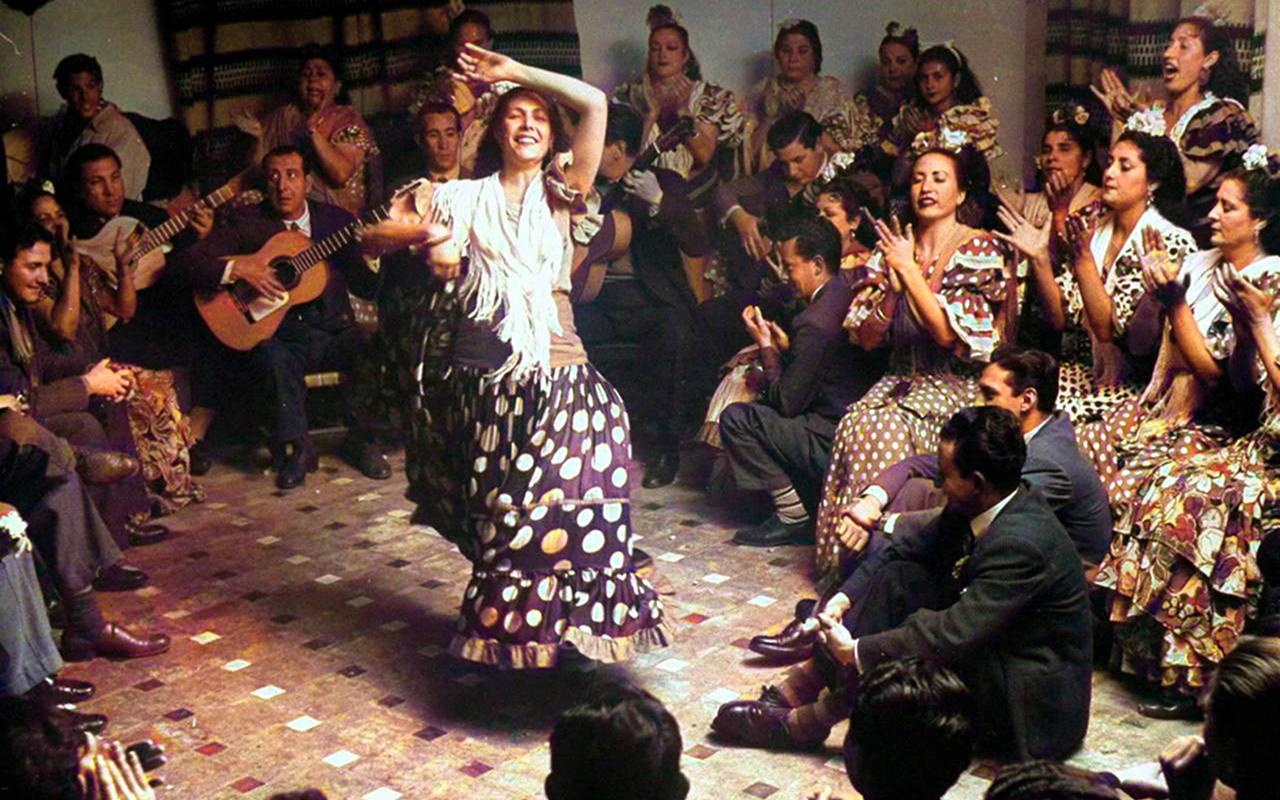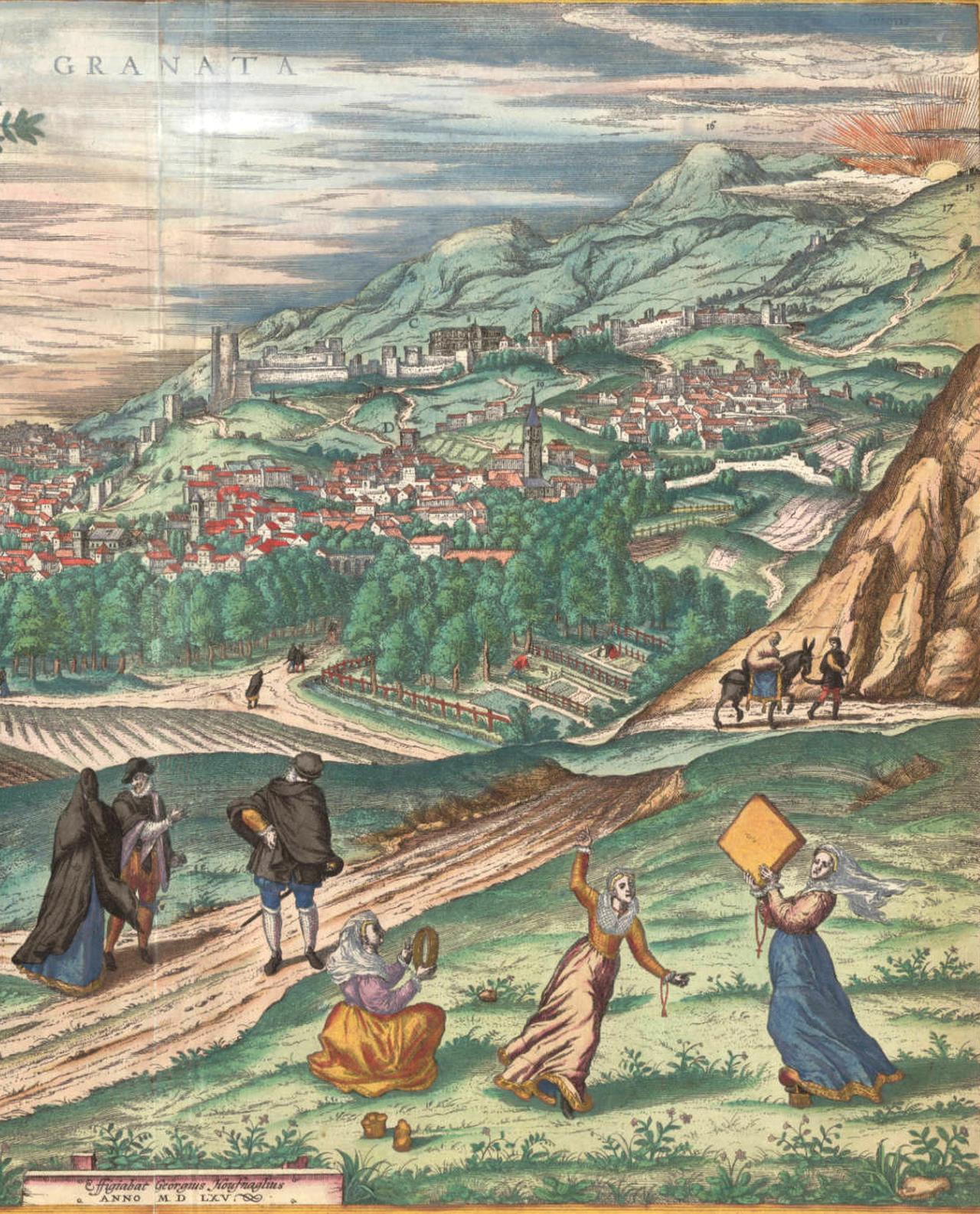
The Origin of Flamenco
In the Museum you will find a cave exclusively dedicated to Flamenco explaining why
Sacromonte is known as
" Cradle of Flamencos and Flamencas."
Nothing symbolises better than Flamenco the universal vocation of Andalusia. It is not the exclusive expression of an elite, but the cry of rebellion and vitality of the Andalusian people so that it can be used by the oppressed of the land. And although flamenco is the voice of the Andalusian people and is only sung in Andalusian and by heart, it is understood in all languages.

Since the end of the war in 1492, the Andalusian Muslim, the Moor, has been increasingly repressed and persecuted. Forced to renounce their religion and language, their customs and way of dressing, in short, their memory, when they have finally lost everything, they are also expelled from the land where they were born.
And many left. Or died on the journey.
But many others, those who had nothing to lose but their lives, stayed. And they stayed with the Romani, as Romani. Renouncing who they were, their own names and taking other Castilian names, they mingled with the Roma people who, in the end, carry in their culture the idea of welcoming the persecuted. They had lost everything except their memory, and that memory, through the songs, the dances and the words, remained in the alloy of bronzes that is Flamenco.
Always hidden and marginalised by being persecuted, we now finally understand the origin of the word.
Phalah means peasant and Mankub is Arabic for a person who has lost everything and who is at the ultimate level of rejection and exclusion.
The faláh-mankub, the flamenco, is not originally the music, but the person. The peasant who has lost everything.
A human situation that attaches members of any collectivity much more strongly than any racial trait is helplessness, fear, pain and rootlessness... the bitter heritage shared by the Moors and the Andalusian Romani.
Anyone who listens to a "cante" can perceive how these tragic sediments rise again and again from the depths of the caves.

Lorca at its most gypsy
"There are things locked inside the walls that, if they suddenly came out into the street and shouted, would fill the world".
"I believe that being from Granada inclines me to a sympathetic understanding of the persecuted. Of the gypsy, the black, the Jew... the Moorish, which we all carry within us".
Federico García Lorca

The origins of Zambra
A cave in the Museum exclusively dedicated to the Zambra, its origins and its history.
Carmen Bernand, PhD in Anthropology from the Sorbonne University, defines the Zambra as 'a particularly sensual Moorish dance, to the sound of castanets and drums, which enlivens the processions'. The French critic Christian Poché goes back a century to recall that these dances and songs were originally considered 'indecent and harmful' according to the Council of Toledo in 1589. The tradition of the zambras was absorbed, learned and transformed by the gypsies of Sacromonte centuries ago. Charles V banned them in the 16th century, during the Inquisition, because 'they were excessively associated with the memory of the presence of the Moors'. However, it continued to be practised clandestinely. The practice of the zambra was subject to attempts at extinction after the conquest of the Kingdom of Granada, and was even banned by the Inquisition in the 16th century.
Its continuity, in a clandestine way, kept the legacy alive. The Romany culture of Sacromonte became the custodian, watching over its survival. In the mid-20th century, in step with the boom in international tourism, the Granada Zambra was reborn with a vengeance. The unique dance became an exotic and much sought-after attraction from those early tourists to the present day.

